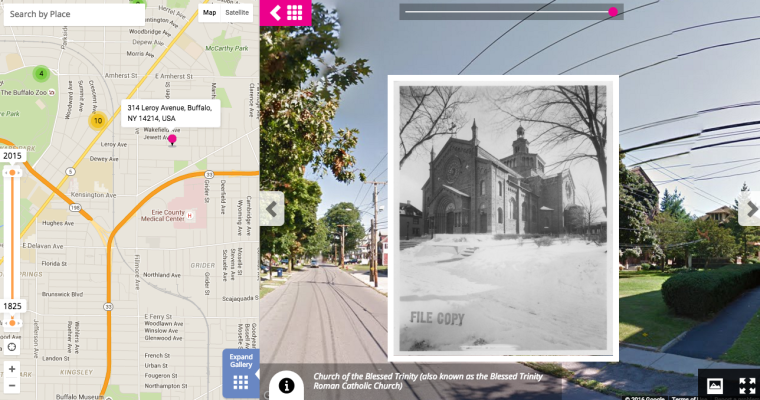The Church of the Blessed Trinity was incorporated into the Roman Catholic Church in 1907 and it was at this time that the congregation searched for a property to build a church and school. The Gesl Family farmlands on Leroy Avenue were purchased and the building of three floors and basement was constructed. The parish school opened on the second floor of the church a year after it opened and was led by the Sisters of St. Joseph.
As of 1919, the congregation and school attendance had grown so large a new church was needed. Father Albert F. Fritton, the new pastor of the church, was inspired by the architecture he had seen in Northern Italy and hired Chester Oakley to design the new building. The building was designed by Buffalo architects Chester Oakley (1893–1968) and Albert Schallmo and was constructed between 1923 and 1928. It cost more than double the original estimate. The newly constructed church opened its doors on August 7, 1923.
The church is recognized as one of the finest examples of Lombard Romanesque churches in the country. There are more than two thousand different symbols throughout the interior and the exterior of the structure that were handcrafted by artisans and crafters. The most notable features of the church include the windows, dome, transept, and choir loft. Originally all of the glass in the church was clear, but in 1952 and 1953 all of the windows were replaced with stained glass by a Buffalo firm belonging to Leo P. Frohe (1851–1919). The dome is a replica of the one in St. Peter’s Basilica in Rome. All of the wall paintings were completed by Joe Mazur (1897–1970), who painted the works on canvas and attached them to the walls of the dome, transept, and choir loft.
Due to the high cost of the construction of the church—$531,000 (about $6.3 million today)—it look the congregation until 1953 to pay its debts and, as a result, the church was consecrated. This is an honor that is only bestowed on about a half of dozen other churches in the city. The church remains an active parish in the city today and is on the list of the National Register of Historic Places.
For more historical information, visit the Albright-Knox’s channel on Historypin.
